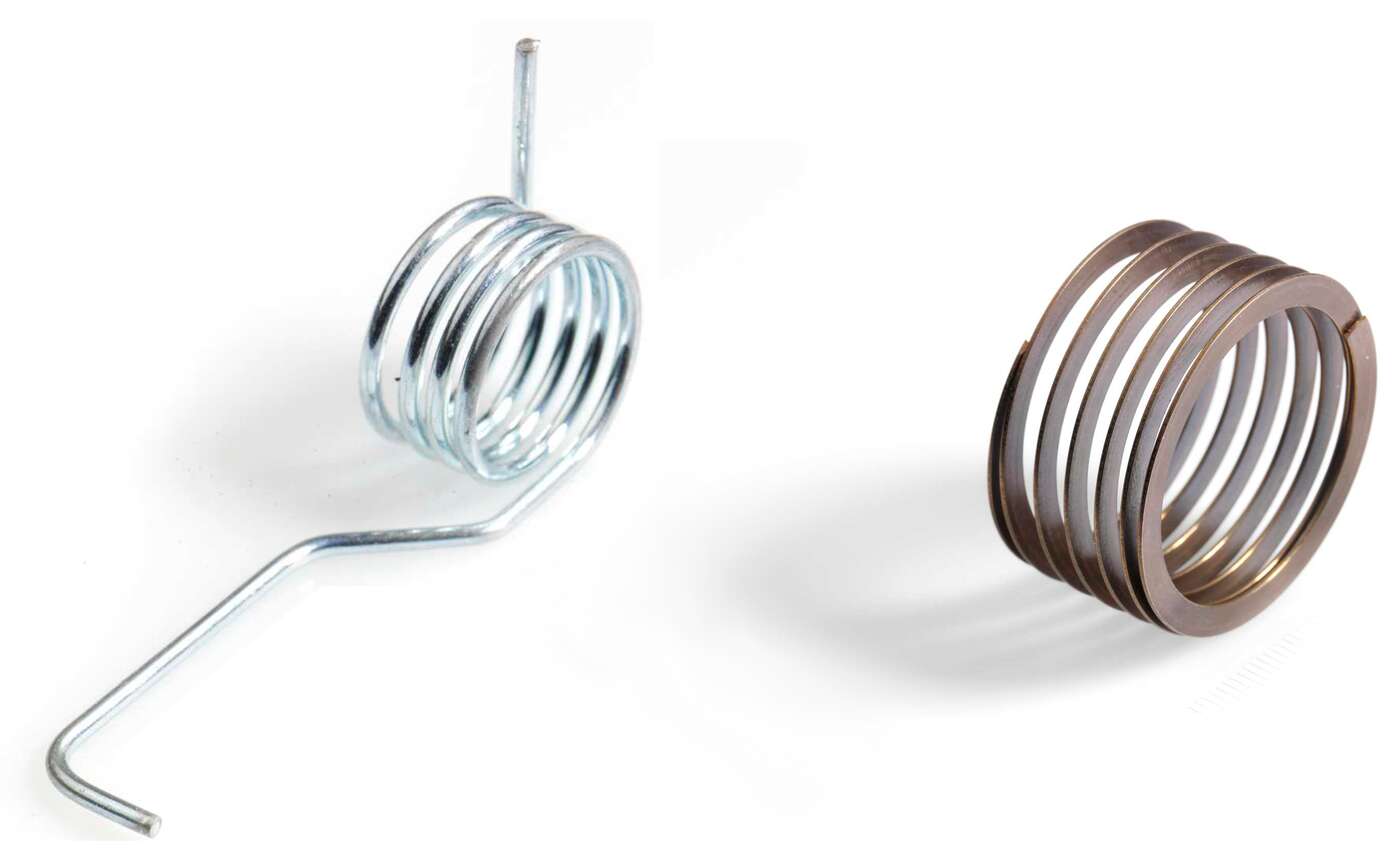Miniature and micro springs come in many different configurations. Essentially, the spring’s performance properties are determined by the coil and wire diameters, the wire material, as well as the actual shape of the wire itself. In terms of the latter, the choice typically comes down to round wire versus flat wire.
The choice between round wire and flat wire micro springs largely comes down to the desired performance properties of the end product. In some cases, potential space constraints require the use of flat wire to achieve the desired spring rate in a compact design.
The choice between round wire and flat wire micro springs largely comes down to the desired performance properties of the end product.
The Basics: Round Wire Micro Springs vs. Flat Wire Micro Springs
As the most common micro spring material, round wire is ideal for many applications that require a balance of long fatigue life, simple manufacturing, and broad material availability. It’s the go-to choice for most compression, extension, and torsion springs where space constraints are not extreme.
Flat wire excels in space-constrained environments or where higher spring rates are needed in a compact footprint. Some advanced end product examples include medical device actuators, microelectromechanical systems (MEMS) in aerospace componentry, as well as many other high-precision electrical device use cases.
More Advanced Considerations: Performance Properties and Fatigue Life
Round wire typically experiences more even stress distribution when cycling, compared to flat wire which tends to concentrate stress at the edges. The uniform round shape means it’s easier to work with and coil into precise geometries. Therefore, if fatigue resistance, ease of manufacturing, and cost-effectiveness are top concerns, round wire is generally the better choice.
However, many modern devices come with challenging layouts and difficult space constraints. Flat wire micro springs excel at achieving higher spring rates in a more compact form. Plus even when the spring is significantly longer in free length, flat wire springs have a significantly smaller solid height than round wire counterparts. As such, flat wire springs experience less compression with each cycle as a relative percentage of their total compression range. In space-constrained applications, we can thus often balance out fatigue life while still achieving the desired performance properties.
A Reference Chart for Round Wire vs. Flat Wire Micro Springs:
| Property: | Round Wire | Flat Wire |
| Stress Distribution: | Uniform across the wire’s cross-section. | Non-uniform as stress is concentrated at the edges. |
| Spring Rate: | Typically lower spring rate relative to coil length. | Higher spring rates possible in a compact form. |
| Space Efficiency: | Less efficient in axial space usage. | More force in limited space (axial compactness). |
| Fatigue Life: | High fatigue life due to uniform stress. | Typically shorter fatigue life due to stress concentration. |
| Ease of Manufacturability: | Easier to coil, simpler to work with, typically lower tooling costs. | More complex processing, tighter tolerances typically required. |
| Surface Finish Impact: | Less sensitive to surface defects or slight irregularities. | More sensitive to defects, with edge quality being critical. |
| Availability: | Standard wire readily available. | Often requires custom tooling and setup. |
The Industry Leader in Micro Spring Manufacturing Since 1984
HyTech Spring and Machine is the leading U.S.-based manufacturer of micro springs for the aerospace sector, medical industry, industrial equipment, and beyond. We can produce standard and custom miniature springs in all common configurations including custom torsion, extension, and compression springs. Our company has delivered superior quality and precision since 1984.
